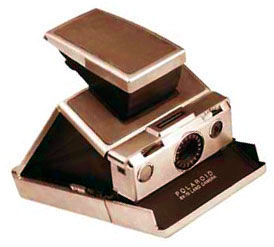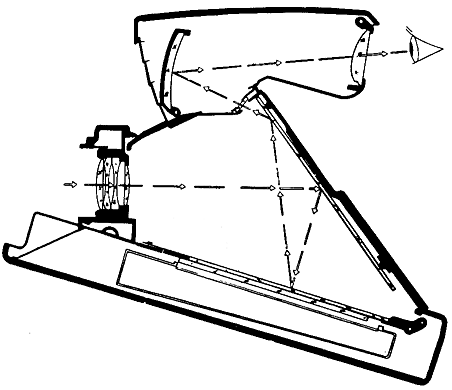CITATION FOR THE 1980 DAVID RICHARDSON MEDAL, O. S. A.
"The Polaroid SX-70 Land Camera is probably the most remarkable optical design ever placed in high-volume production. From 1969 through 1973 Dr. William T. Plummer was part of a small design team, led by Dr. Edwin H. Land and including Dr. James G. Baker and Dr. Richard F. Weeks, that conceived of this folding catadioptric single-lens-reflex system and produced an optical design that evolved along with the camera's mechanical and electronic structure. Dr. Plummer made significant personal contributions and provided technical leadership for a small group of scientists and engineers who worked with Dr. Baker to relate his geometric design to the needs of the product, to create precise tooling for plastic molding of unusual optical components, and to set up a range of new manufacturing technologies for producing and assembling high-quality optical elements.
"Dr. Baker's design uses a four-element glass photographic objective, a plane mirror to fold the system, and a reflective Fresnel focus screen. The image formed on the screen is passed by a small aperture stop and relayed to the photographer by an aspheric concave mirror and eyelens. For structural reasons every viewfinder component from the focus screen onward is tilted, decentered, or both. Dr. Plummer introduced non-rotational aspheric surfaces on the eyelens and on a refractive corrector plate at the aperture stop, and designed an astigmatic Fresnel mirror. He built many functioning prototype systems as the design and aspheric tooling progressed so that a careful balance could be made among unfamiliar aberrations represented in the figure of merit, and guided the mechanical design of the camera so these optical parts would be positioned accurately each time the camera is unfolded. He designed a null tester which is used for controlling the shape of the molded concave mirrors and designed a series of instruments for simplifying quality measurements and all assembly adjustments in volume production.
"A surprising depth of investigation was needed to support design decisions. Dr. Plummer studied the basic function of a focus screen to understand a four-way compromise which occurs in roughening the reflex focus screen. He personally devised the texture which has been replicated in production. In the case of the photographic objective, which moves through its focus range by displacement of the front element, he used analysis based on the modulation transfer function to derive the best subjective focus scale for different object distances with a changing aberration balance. He studied the optics of the shutter mechanism itself, and found that by using an expanding and contracting aperture stop as a shutter the SX-70 significantly improves upon the familiar compromise of motion-freezing against depth of field.
"Dr. Plummer numerically determined the sensitivity of the film plane image to field tilt caused by tilting and decentering of individual lens elements, and used a Monte Carlo computing procedure to relate manufacturing yield to piece-part tolerances in the objective lens. The analysis guided the mechanical design and demonstrated that the best economy requires culling some inferior lenses. To do this, he and his colleagues designed and built a machine capable of testing 1200 lenses per hour with a modulation-related figure of merit that correlates extremely well with subjective quality judgments. In an effort to understand the system tolerance budget he expanded upon and generalized a study begun in 1962 by Dr. R. Clark Jones, of the computed modulation transfer properties of diffusion transfer films, and applied it to a model representing the new SX-70 film. Certain details of the exposure characteristic curve led him to extend a 1953 study by Williams and Clapper on the effect of multiple internal reflections in a color print, and to apply it to the more complicated case of SX-70 film.
"For other manufacturing requirements Dr. Plummer studied the basic
physics of bell centering, toleranced lens and mirror surface coatings by relating
them to photographic tristimulus color coordinates, and built automatic
machines sensitive to local irregularities for screening plane mirrors to a
demanding performance criterion."

